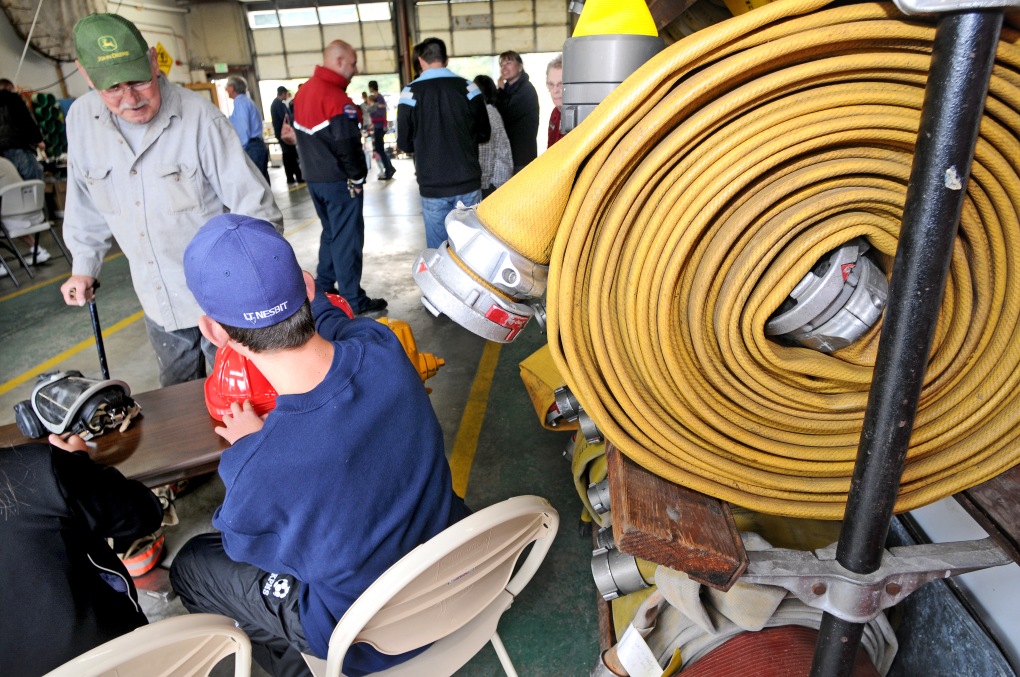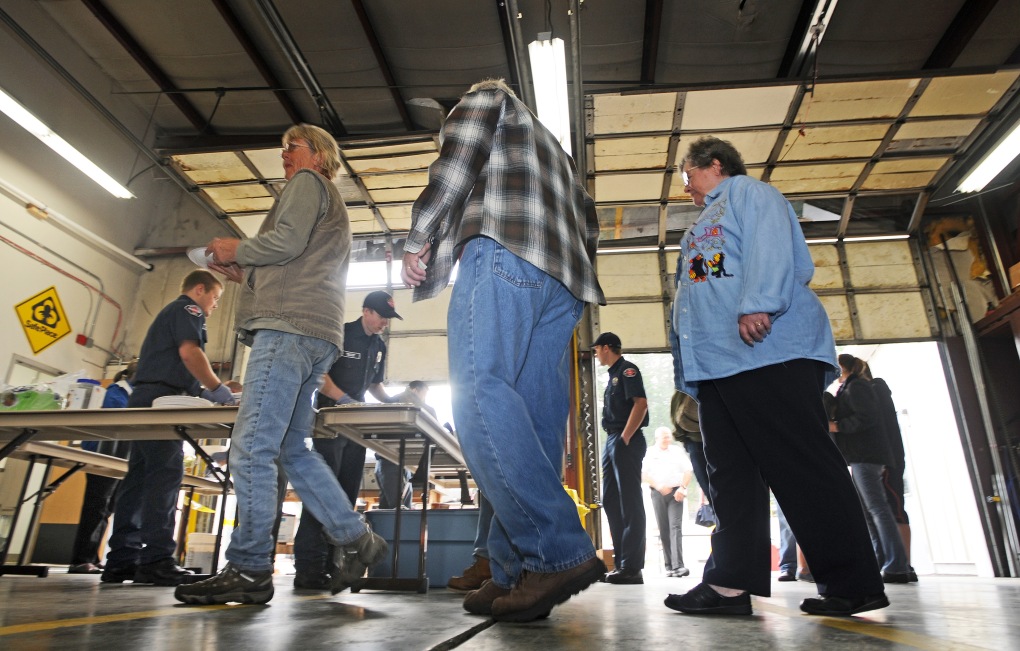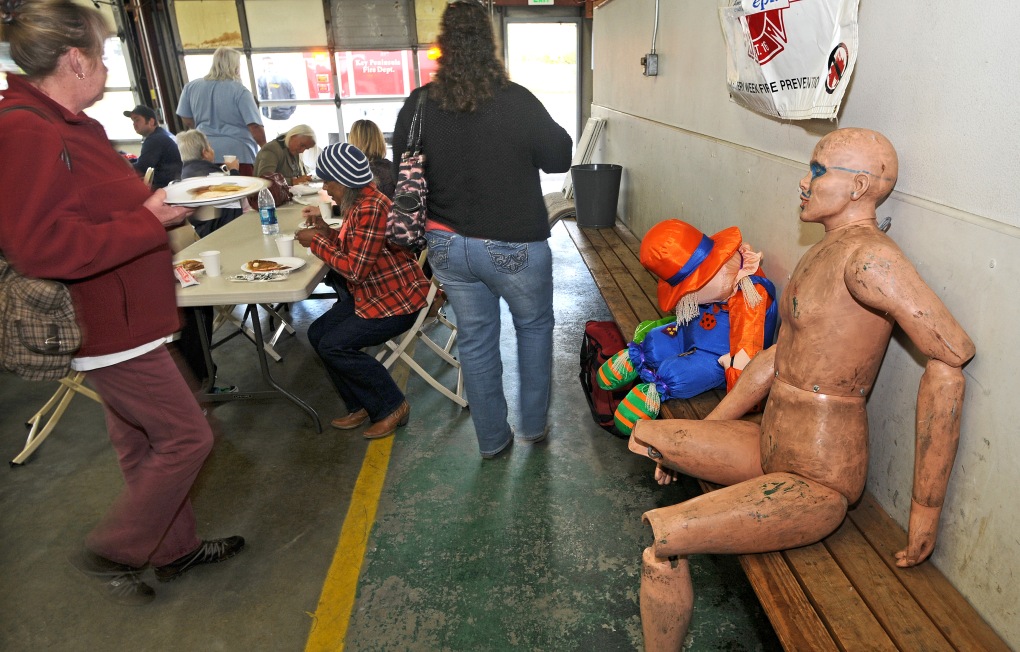
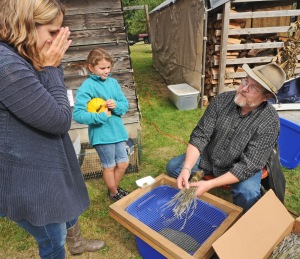
Bill Ketts loved this time of year.
When the sweet scent of lavender warms the crisp autumn air, the corn is ripe for the harvest, and throngs of city folk flood the quiet country roads of the Key Peninsula to experience farm life.
“He loved to see everybody enjoying the fruits of their labor,” said Stephanie Patterson, Ketts’ daughter. “It is something he always wanted.”
Ketts died earlier this year. The KP Farm Tour was dedicated to his memory.
“We get on our hands and knees and work the ground,” Ketts said last year as farm tour president. “Farmers we know on the Key Peninsula do this.
“We love it, so we do it,” he added.
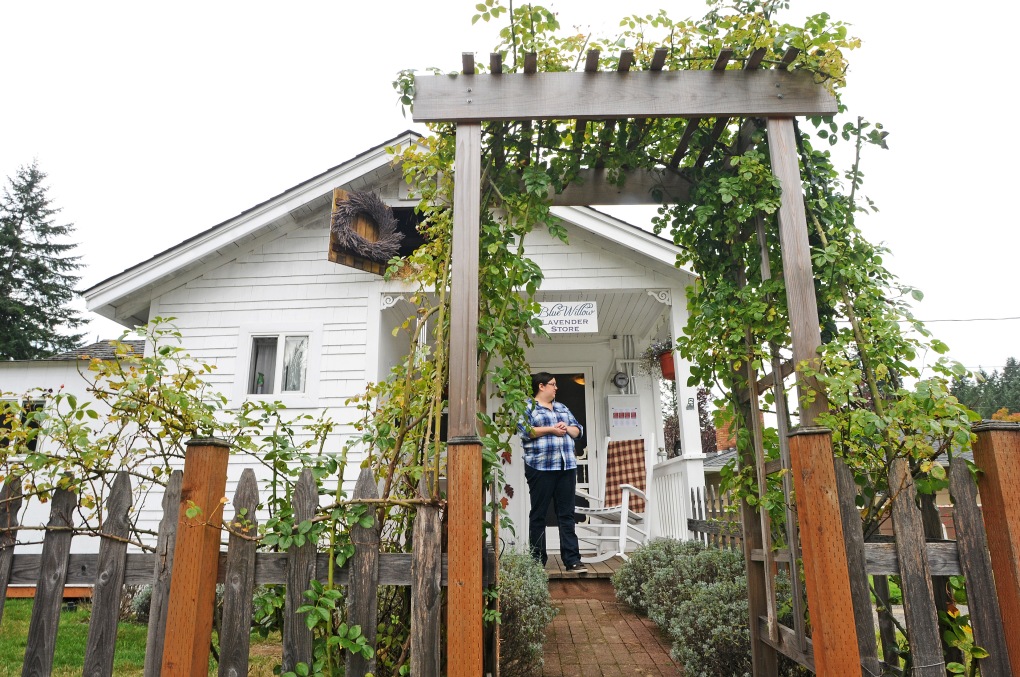
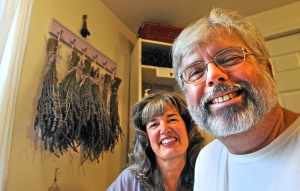
As dozens of cars lined up to park on a meadow at the 15-acre Blue Willow Lavender Farm, Ketts’ wife Tracy quietly said “he would have loved this.”
The couple from California worked this piece of land along Wright Bliss Road on the northern end of the Peninsula the last six years. Tracy continues their work, selling produce and lavender products from a little white country house.
“It is amazing,” Patterson said, about what her mom and dad have done to the property.
“We were here at the very beginning, it was just a bunch of tall grass and dirt,” she said. “They really took this and made something special out of it.”
Ketts had a spiritual connection to this land. He said last year that it was an easy sell for him and his wife to move north and accept an offer from Mike Walsh, a friend, to work his land.
“Bill felt like he had been called to this farm,” said Philip Marshall, a friend of the Ketts who was demonstrating how to separate lavender buds. “He felt God had opened up an opportunity for him to start a church here. That is what he did.”
His quick smile and passion for working the land was remembered. His legacy apparent in every lesson a tour guest gets after visiting his farm.
“Bill set up the farm and it became a gateway to talk to people who came out here,” Marshall said. “He always had time for people. Anyone who met him knew Bill seemed like the guy you’d always known your whole life.”
This picture of passion, perseverance and neighborly warmth was on full display at six working farms and six businesses, clubs and agencies on the tour.
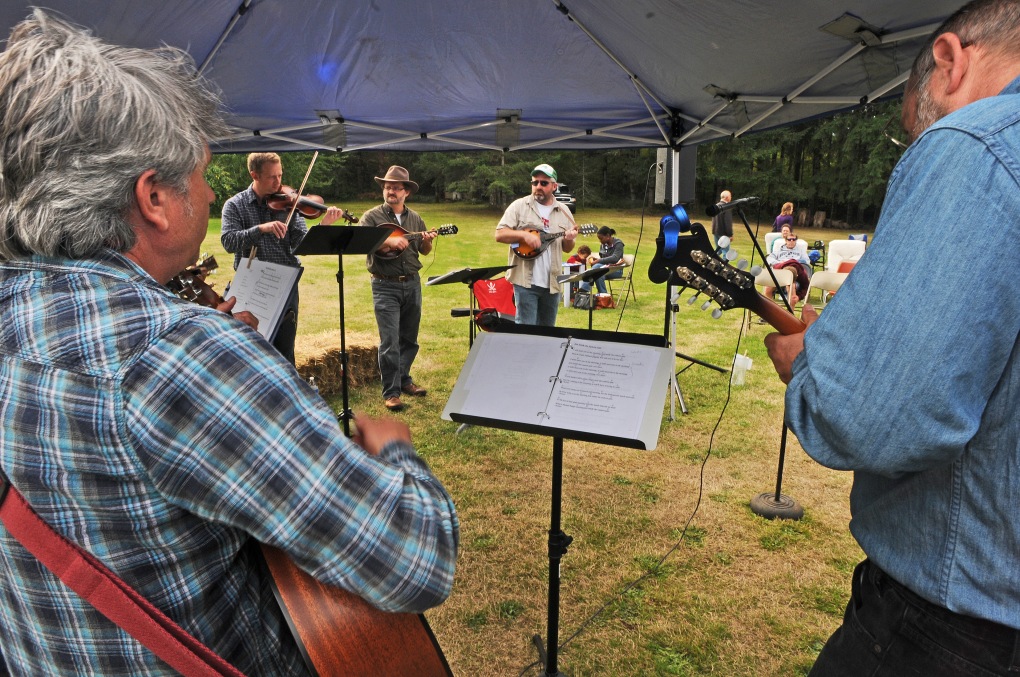
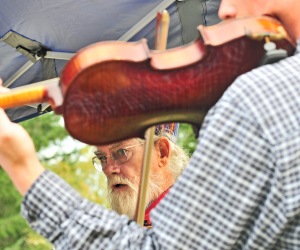
“As far as I can tell everything was positive except for a few complaints because people wanted a bigger map, bigger signs and more signs along the route,” farm tour president Carolyn Wiley wrote in an email.
Wiley said they have not yet gotten a headcount of how many visitors made the trip south of Purdy, but “everyone that got to (the last venue) seemed really pleased about the day.”
LOVE AFFAIR WITH DIRT
Outside a 40-foot-long greenhouse at Creviston Valley Farms stood Hans Albert Quistorff, 74, greeting visitors on the farm tour, encouraging them to step in his world.
His world is full of luscious leafy vegetables, tomatoes of all varieties (including one that grows seemingly out of the ground) and of proudly working the land to help provide fresh produce for his neighbors.
Quistorff sells his berries as QBerry Farm at the Fresh Food Revolution cooperative market at the Key Peninsula Civic Center on Wednesdays. He said he doesn’t sell very much – “About 15-dollars-worth-a-week is all I sell.”
But he is an enthusiastic practitioner of growing your own food and an able ambassador of sustainable farming. Mostly because he lives the lifestyle, but also because he grew up on it.
Pointing to the farm house Greg and Lalaine Wong built on their beautiful piece of land down key, Quistorff said “before they had that house, I have a video of me pulling out a carrot from the ground on that spot.”
He said his mother then asked him to take a bite.
“I’m not going to eat this,” a precocious 3-year-old Quistorff told her laughing. “It’s got dirt all over.”
Thus began his 70-year love affair with dirt.
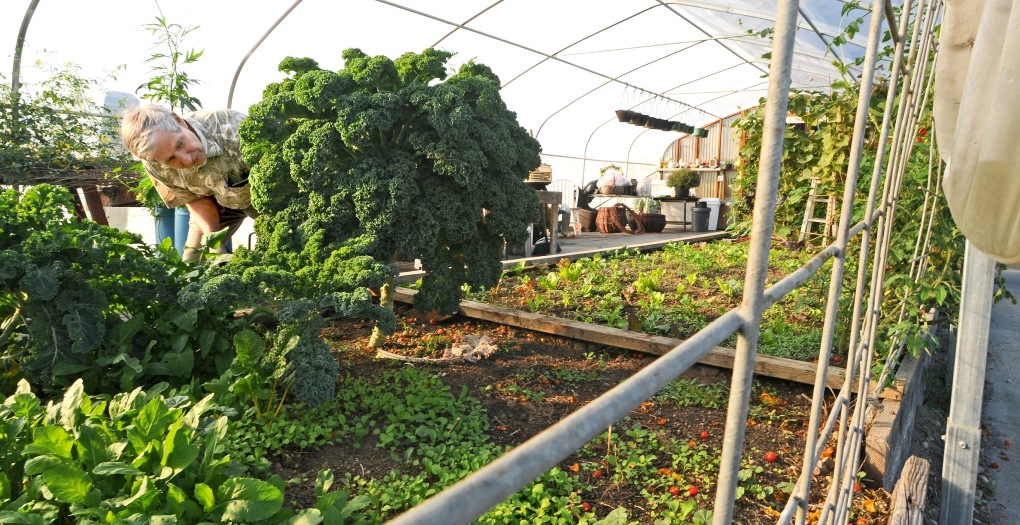
A FAMILY AFFAIR
At Minterbrook Oyster Farm on the mouth of Minter Creek, just a few miles south of the Purdy spit, family was a familiar theme.
As guests got to the bottom of a driveway lined by majestic cedars, they were greeted by a smiling Kiki Mamea and offered a candy lei. The festive island motif was her family’s idea – together with her sister Malaysia and mother Tai, who does accounting work at the farm.
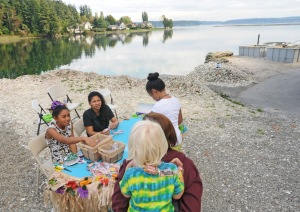
“Lots of hundreds” of people have gone through here today to see the process of harvesting and rejuvenating oysters, said oyster farm owner Kent Kingman.
He said he introduced a process of rehabilitating oysters to keep them healthy and alive before shipping them. This keeps the shellfish fresher and more in demand, he said.
Minterbrook oysters’ life after harvest used to only be between three to five days. By rejuvenating them, he said, the oysters stay alive for 13 to 15 days.
“That makes a big difference,” he said, “in freshness and price.”
So why get into the oyster business?
“That is easy,” said Kingman with a chuckle.
He said he used to work as a consultant for companies needing help with labor relations and evolving workplace cultures. He most recently did work for the Transit Authority in New York City.
“There were a lot of violence in the workplace,” he said of the situation in New York.
The demands of the job kept him away from his family.
“I didn’t want to do that anymore,” he said. “I wanted to be home.”
Somehow the idea of going into the shellfish business seemed natural, and it all started fittingly enough on the dinner table.
“My boys love seafood,” he said.
Kingman then tells a story of how one of his boys a few years ago ate stack after stack of clams at C.I. Shenanigans in Tacoma.
“He must have eaten a record 177 clams,” the proud father recalls, “and he was just six or seven years old.”
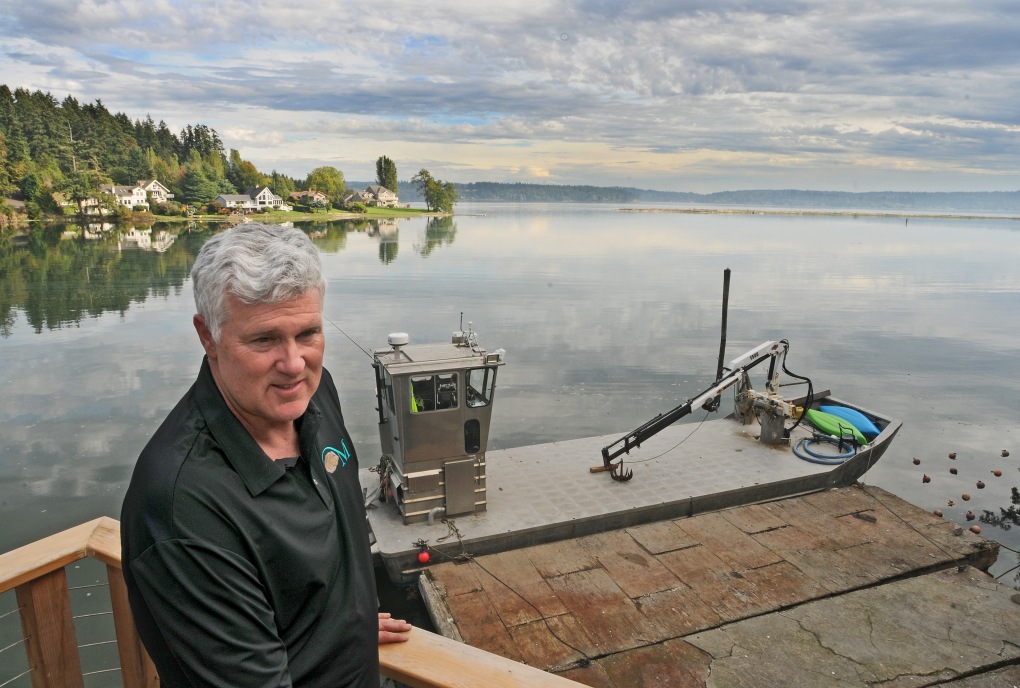
Kingman said after that he asked his family if they wanted to raise clams on their property on the western shore of the Peninsula. They started producing roughly 15,000 pounds of clams a year.
In 2012, they became the third family to own Minterbrook Oyster Farm since Hubert Secor and his family started the business in 1932. The Secors sold the oyster farm to Harold and Beverly Wiksten in 1954.
“I walk in here and look out and say ‘this is awesome’,” he said.
His morning routine goes something like this: He gets up and makes the boys – Garret and Austin — breakfast, pack their lunch, read a few verses of the Bible with the family, drop them off at school and arrive at the mouth of Minter Creek around 7:45 in the morning.
Kingman grew up on seven acres in Poulsbo, he said, “and my dad bought a piece of property and made it like a park.”
As you step inside the office suite at Minterbrook, you get the same impression as you take in the sweeping view of Henderson Bay with Mount Rainier in the background.
“That was by design,” he said of the renovation work his wife Donna has done at the farm.
The farm employs 20 employees at the Minter Creek facility, Kingman said, “and the best thing about it is they all live right here on the Key Peninsula.”
Another 30 work the tidelands, he said.
Kingman said they have tried to keep the culture at Minterbrook more like family and less like a business.
But don’t be fooled. This is big business. Roughly 3 million whole live oysters, another million of the shucked variety and about 125 tons of clams go through this facility each year. They get served locally and shipped around the world.

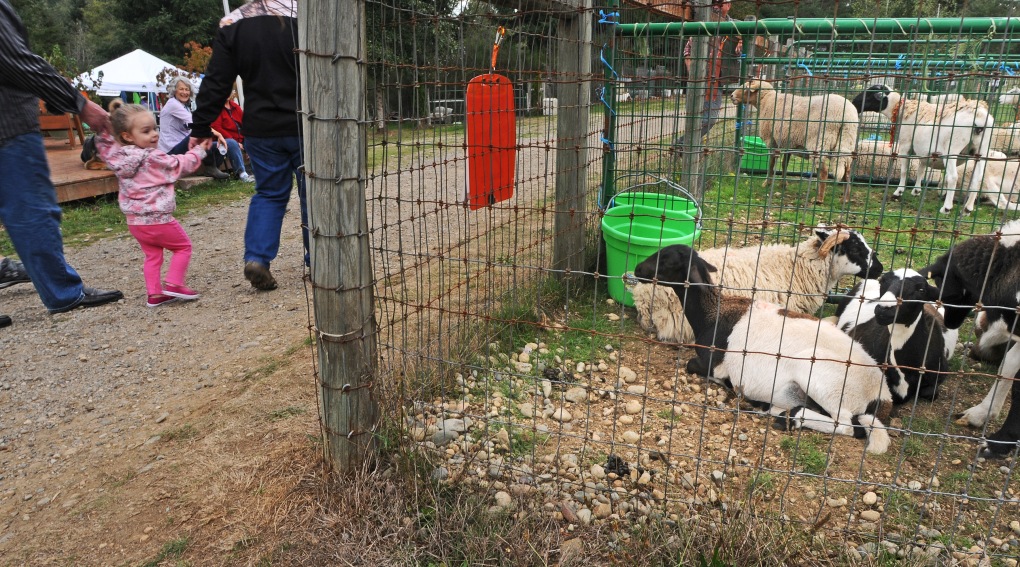
DOG LOVERS’ PARADISE
For the dog lovers on the tour, PackLeader Farm owner Steve Weigley gladly explains what his farm does.
“Basically we are a sheep dog facility,” Weigley said. “Dogs learn how to herd here and we teach owners how to fix problems with their dogs.”

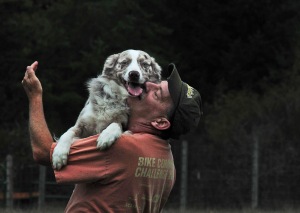
He said they probably “watched the movie ‘Babe’ and got a border collie and didn’t realize the kind of energy” that breed of dog has.
Then they find out “their dog wants to do some herding and they have no idea (what to do),” he said.
If you think your dog is a herding breed Weigley recommends that the dog get an instinct test. It is usually done in a round pen – so the sheep cannot be cornered – to determine if the dog has strong directional instincts.
Weigley’s farm was packed with working dogs. Some were here with their owners to simply see the farm. Others like Nole West of Everett and his dog Fred got on the field to demonstrate what it is they do.
They started a field exercise with a fetch and gather, where Fred runs out and gathers the sheep. Then West worked his 3-year-old Australian shepherd through a “Y” chute and then a “Z” chute. From the middle of the field, West explains, they went through a cross drive bringing the sheep to the corner “where I normally would have exhausted (the sheep) if I’d been in competition.
“Instead that is when I called him off and he got his chance to jump into my arms and I told him he was a good boy,” he said. “This was just a little bit of showmanship out here.”
According to West, his dog’s burst of enthusiasm is “a little bit of his rules” or Fred will not do what West needs him to do.
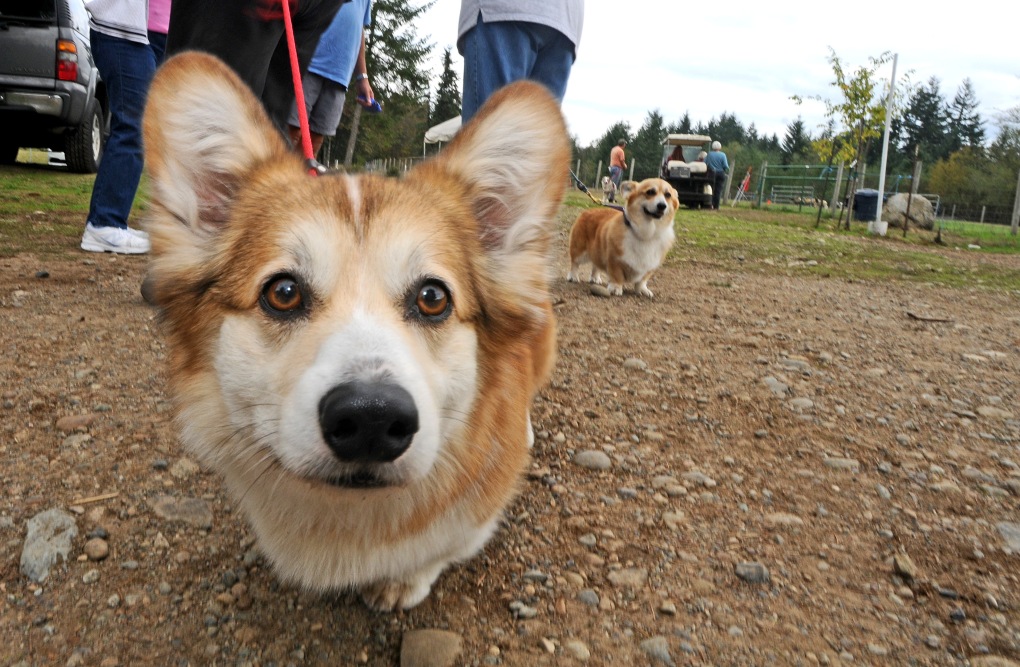
As you look around the farm, you will notice the pens where over 100 sheep and a handful of guardian dogs live. There are two exercise fields in the back of the property and two smaller assessment pens just behind the farm house.
Children and adults alike gawk at animals in the petting pens as sheep bleet and dogs bark. Their day have been full with exhibits and demonstrations of what folks do on the Key Peninsula. The sublime scenery a welcome treat.
Lisa Bryan, a Peninsula resident who had an exhibit at the Fiber Arts Show in Longbranch, said many who had taken the drive south for the first time were charmed by the people and amazed by the beauty of the place.
“Possibly the most rewarding of all,” Bryan said, “is overhearing conversations (that go) ‘This is where I first became interested in… (fill in the blank)’.”
For more photos, go to https://www.flickr.com/photos/dmontesino/sets/72157648025017018/
